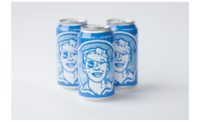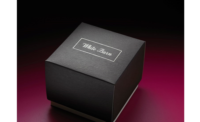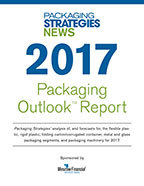In 2014, we saw a large number of brands experimenting with and adopting flexible packaging to market their goods. Flexible packaging has an association – one that isn't necessarily deserved, as we'll see later in this piece – with being environmentally friendly and is often cheaper to produce than traditional packaging, so it's very likely that this trend will continue in 2015 and beyond.
So-called eco refill packs, popular among coffee manufacturers, may use less packaging but the fact that foil can't be reused at all recycling plants complicates matters slightly. Materials like glass and cardboard can widely be recycled, sometimes even in a closed loop–meaning that it can be recycled endlessly with no reduction in quality. Of course, there is still a cost–both financial and to the environment–associated with transporting the materials, powering recycling plants and so on.
Elsewhere, brands are taking radical steps to improve their carbon footprint. Carlsberg determined that 45% of their total greenhouse gas emissions come from packaging, and are working on an eco-friendly fibre bottle that's completely biodegradable. One problem is that such options aren't necessarily very visually appealing–this means that it's less likely they'll be adopted by luxury brands, at least not in their current state.
Personalisation remains popular, with variable printing used to customise anything from university prospectuses to catalogues or charity appeals. This helps businesses to stand out in the sea of junk mail that potential customers receive every day, and isn't prohibitively expensive. With 3D printing on the rise, the possibility of personalised packaging and products is closer than ever before.
Can packaging ever be a deciding factor when it comes to purchasing products? It may seem unlikely, but positioning flexibly packaged food and drink as an 'on the go' option is one way companies are capitalising on this. After all, it's far more convenient to slip a squeezable tube of soup into a handbag than it is a bulky can and tin-opener.
And let's not forget Apple. Often praised for their elegant, albeit inflexible packaging, there's even a market on YouTube for videos of consumers unboxing Apple products–around 1 million videos at the time of writing. This may not be a purchase motivator exactly, but it's undeniably an important part of the experience for many customers.
With that in mind, the combination of packaging used seems set to become more important. Many consumers appear more interested in buying into brands than the products themselves, so consistency and a coherent aesthetic are important. For example, fitness supplement providers are increasingly using stand-up flexible plastic packaging with foil inners. This gives them a space-age feel, more so than the bulky tubs of years gone by, which fits with the idea that the products are cutting edge and scientifically engineered.
On the other end of the scale, some brands are adopting a 'back to basics' approach that fits with their ethos. Fragrance brand Juniper Ridge use packaging embossed with wilderness scenes and rustic wooden caps. The use of cork and wood really helps to give products an 'old school' vintage style.
With more choices than ever–plastics, metal, foam, fabric etc. all on the table–companies are spoilt for choice when it comes to packaging. It seems that using forms of packaging that fit with a brand's ethos or style is increasingly important to customers and, if they happen to be environmentally friendly as well, so much the better!
Elanders UK is part of Elanders Group, which is a company with operations in 15 countries on four continents. Elanders Group offers its customers global solutions for print & packaging, supply chain management and e-commerce.




